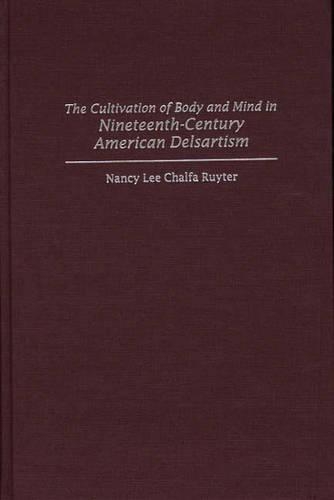
The Cultivation of Body and Mind in Nineteenth-Century American Delsartism
(Hardback)
Publishing Details
The Cultivation of Body and Mind in Nineteenth-Century American Delsartism
By (Author) Nancy Ruyter
Bloomsbury Publishing PLC
Praeger Publishers Inc
30th September 1999
United States
Classifications
Tertiary Education
Non Fiction
Theatre studies
History of the Americas
Gender studies: women and girls
792.0973
Physical Properties
Hardback
200
Width 156mm, Height 235mm
482g
Description
This study chronicles the American adaptation of the theory and practice of the French acting, singing, and aesthetics teacher, Francois Delsarte. Delsartism was introduced in the United States by Steele Mackaye, Delsarte's only American student. American Delsartism, with its emphasis on physical culture and expression, differed significantly from Delsarte's works in France. The system evolved from professional training for actors and orators to a means of physical culture and expression that became popular among middle and upper class American women and girls. It allowed nineteenth-century women to pay attention to their bodies, to explore their own physicality, and to perform in a socially acceptable venues. In its later manifestations, Delsartism influenced the innovative dance of such artists as Isadora Duncan, Ruth St. Denis, and Ted Shawn. Biographical information on the most notable figures in the development of American Delsartism is presented along with a discussion of the spread of Delsartism throughout the United States and to Germany. The Delsartean approach to training and expression is traced from Delsarte and Mackaye through the theory, teaching, and performance of Genevieve Stebbins, the most notable American proponent of the system. This work will appeal to scholars of dance history and of late nineteenth-century women's studies. Theater historians will appreciate the detailed account of the system as developed and taught by Steele Mackaye as training for actors. Although Delsartism has been acknowledged as relevant to the history of modern dance, scant information and research has previously been published which explores the movement in depth and discusses its importance to women's physical and cultural education in nineteenth-century America. Photographs illustrate the text and an extensive bibliography serves as a useful guide for further research.
Reviews
Ruyter's ability to synthesize diverse materials and to write lucid, engaging prose stands out among the many virtues of this book. She proceeds from an awe-inspiring command of the Delsarte literature and archival sources, not to mention fields such as speech and theatre, physical culture, women's studies, dress reform, education, and occult religion. Her physical experiments with Stebbins' exercises feed into her broader understanding of dance and theatre, enabling her to produce remarkably clear accounts of movement work in the past.-Dance Chronicle
Ruyter's study is both scholarly and entertaining and is written in a language that is clear, unpretentious and exact. She reminds us that American Delsartism left an extensive social as well as artistic legacy that is not always acknowledged and provides a welcome introduction to the phenomenon that not only helped shape theories of acting and modern dance in the United States but is important to the field of American cultural studies as well.-Theatre Research International
This is a relevant title not only for dance historians but also for those interested in aspects of the development of body-mind attitudes in European and US culture.-Choice
"Ruyter's study is both scholarly and entertaining and is written in a language that is clear, unpretentious and exact. She reminds us that American Delsartism left an extensive social as well as artistic legacy that is not always acknowledged and provides a welcome introduction to the phenomenon that not only helped shape theories of acting and modern dance in the United States but is important to the field of American cultural studies as well."-Theatre Research International
"This is a relevant title not only for dance historians but also for those interested in aspects of the development of body-mind attitudes in European and US culture."-Choice
"Ruyter's ability to synthesize diverse materials and to write lucid, engaging prose stands out among the many virtues of this book. She proceeds from an awe-inspiring command of the Delsarte literature and archival sources, not to mention fields such as speech and theatre, physical culture, women's studies, dress reform, education, and occult religion. Her physical experiments with Stebbins' exercises feed into her broader understanding of dance and theatre, enabling her to produce remarkably clear accounts of movement work in the past."-Dance Chronicle
Author Bio
NANCY LEE CHALFA RUYTER is Professor of Dance at the University of California, Irvine.
